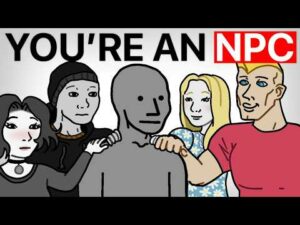How A Fierce Fan Army Power-Lifted ‘Star Trek’ From The Brink—Twice—And Changed TV History Forever
Ever wonder when fandom truly became a force to be reckoned with—capable of bending the mighty entertainment industry to its will? Before the recent “Restore the Snyderverse” movement that resurrected Zack Snyder’s epic vision for the Justice League, there was a legendary campaign that set the cosmic bar: the determined fight to save the original Star Trek from the chopping block not just once, but twice during its 1966 to 1969 NBC run. Imagine a show pitched as a simple “Wagon Train to the stars,” yet boldly pioneering social commentary, diversity, and respect for science fiction in prime time, only to struggle with ratings while quietly rallying a passionate community of fans who refused to let it die. This story isn’t just about letters and protests—it’s about the birth of a fandom that changed television history and proved just how powerful a devoted audience can be. Intrigued? Dive into the saga of how Star Trek’s loyal fans rewrote the fate of a series and maybe even the future of sci-fi itself—because sometimes, saving the galaxy starts with a single letter. LEARN MORE
There have been moments when the fans have wielded a tremendous amount of influence over the films or television shows that they’ve loved, the most recent being the movement to “Restore the Snyderverse,” which resulted in Warner Bros allowing director Zack Snyder to complete his epic vision for the Justice League. But the fan movement that preceded all others was the one to save the original Star Trek from cancellation no less than two times during the show’s 1966 to 1969 run.
When Star Trek premiered on NBC, it was unlike anything else on American television. Gene Roddenberry had sold the network on a “Wagon Train to the stars,” but the series was far more ambitious than its simple pitch suggested. It tackled social issues through allegory, presented a diverse crew at a time of social upheaval and treated science fiction with a respect rarely seen on network TV.
Under the guidance of what associate producer Robert H. Justman fondly called the show’s “fab four”— Roddenberry, writer/producer Gene L. Coon, story editor D.C. Fontana, and Justman himself—the first season scripts grew stronger as the show found its voice. Episodes introduced ideas that would define the franchise, from the non-interference Prime Directive to the arrival of the Klingons. Character interaction became the heart of the series—particularly between Kirk (William Shatner), Spock (Leonard Nimoy) and McCoy (DeForest Kelley)—and the show increasingly offered social commentary wrapped in adventure.

Yet despite these creative triumphs, ratings were never stellar. The show performed decently on Thursday nights but failed to dominate its timeslot and NBC executives were restless. Cancellation rumors circulated before the first season had even concluded, prompting Roddenberry to turn to a then-trusted friend for help: science fiction author Harlan Ellison, who would pen the early drafts of the show’s greatest triumph, “The City on the Edge of Forever.”
Ellison’s campaign began quietly. On December 1, 1966, he wrote to the Science Fiction Writers of America, rallying his colleagues to support the show. He warned that Star Trek’s cancellation “would be tragic, seeming to demonstrate that real science fiction cannot attract a mass audience. We need letters! Yours and ours, plus every science fiction fan and TV viewer we can reach through our publications and personal contacts.”
How Harlan Ellison helped kick off the campaign

His plea circulated through the tight-knit science fiction community, where fanzines and word-of-mouth communication were the primary networking tools. While mainstream audiences were largely unaware of the threat, early fans recognized that Star Trek was something special—and that the show might need their help to survive.
Devra Langsam, who published Spockanalia, the first Star Trek fanzine, recalled how even the smallest efforts felt vital. During that first season, her cousin Debra took to the streets of Manhattan to hand out “Save Star Trek” flyers.
“My cousin picketed NBC and walked around passing out flyers in Manhattan, and people kept telling her that ‘Dr.’ Spock was a commie,” she recalls. “They were a little confused. So, we were definitely handing out flyers and buttons and NBC kept sending secretaries down, and they’d report, ‘They’re still there; there’s four of them, they’re still picketing us.’ It was only a very small number of people, but we kept handing out those flyers and buttons and writing them letters, not petitions. A petition isn’t as good—it’s a lot less effort but writing them letters is stronger.”

NBC’s responses were polite but dismissive. Fans called them “thank you very much and please drop dead” letters—form replies noting that opinions had been logged. Yet even this minor effort signaled something new. Television audiences were discovering that they could fight for a show they loved, and the protests spread to NBC’s Burbank, California, offices as well.
Gene Roddenberry encouraged these small-scale efforts, sending fans personal tokens from the production to thank them for their support. Pieces of actual 35mm film—cutting-room clippings—were mailed out with notes of appreciation. For fans, holding a fragment of Mr. Spock or the Enterprise in their hands created a sense of connection that fueled further advocacy.
Jacqueline Lichtenberg, who would later found the Star Trek Welcommittee, recalled how Star Trek changed the way science fiction fans saw themselves as well as how the public saw them.
“The general attitude of the public in the U.S.A. prior to Star Trek was total rejection of science fiction as just for people who were completely out of touch with reality,” she notes. “Being in touch with reality was the litmus test for being trustworthy. Science-fiction readers were not respected and the literature was viewed by English teachers as toxic to a student’s development of good taste. The same was true on TV.”
She traced a slow evolution in audience perception, noting that shows like My Favorite Martian had introduced playful science fiction to prime-time audiences, but Star Trek elevated the genre. “Comedy can make serious, deep philosophical points that drama cannot,” Lichtenberg points out. “My Favorite Martian let the kids who had grown up on Saturday morning shows laugh in prime time, and Star Trek brought the concepts to the level of adults who watched Wagon Train.”
The first wave of letter-writing, modest though it was, accomplished its goal: NBC renewed Star Trek for a second season, though the show remained under constant scrutiny. Fans had saved the Enterprise once—but the real test was yet to come.
Panic in Season 2

By the middle of the second season, cancellation fears returned with a vengeance. Ratings had not improved enough to satisfy NBC and the network remained wary of the show’s vocal but still relatively small audience. This time, Harlan Ellison—having fallen out with Roddenberry over the rewriting of his episode The City on the Edge of Forever—would not lend his support.

And for his part, the late Ellison had become skeptical of the series and the surrounding fandom: “I was very optimistic about the show in the beginning, but within a couple of years that changed and everybody was laughing at me. When these people said, ‘Star Trek is going to be the new horizon for us; we’re going to sell more science fiction than ever before and it’s going to be the Golden Age,’ I said, ‘No, it’s not, you fools. You’re not going to sell one more of your novels. What they’re going to sell are Star Trek books,’ and this was before there was ever a Star Trek novel.”
The show’s fate now rested entirely with its fans. Jacqueline Lichtenberg comments, “The reaction to news about the cancellation was panic. This was material to be passed down to grandchildren, not left to rot in some vault. This was a historic breakthrough, not a trivial bit of failed entertainment.”

And that’s when Bjo and John Trimble stepped forward to organize one of the most famous fan campaigns in television history. They recognized the stakes: without a third season, the series would not reach the magic number of episodes required for syndication—typically around 100 for a weekday rotation. In the pre-home-video era, that meant Star Trek would effectively vanish. The couple began their campaign with the simplest of tools: a mimeograph machine and a carefully crafted letter.

“We wrote up a preliminary contact letter, ran it off on our ancient little mimeograph machine and mailed it out to about 150 science-fiction fans,” the duo, extremely well known in fan circles, explain. “These fans had been especially selected because they had some further contacts, either as fanzine editors, club members or for some such reason.”

The plan followed what they called the Rule of 10: ask 10 people to write letters, have each of those 10 ask 10 more, and continue until NBC was swamped.
NBC’s executives underestimated the sophistication of Star Trek’s audience. Says the Trimbles, “NBC was convinced that Star Trek was watched only by drooling idiot 12-year-olds. They managed to ignore the fact that people such as Isaac Asimov, a multiple PhD, and a multitude of other intellectuals enjoyed the show as well.”
The million-letter flood
As the Trimbles’ campaign spread, the response exceeded all expectations. Letters began pouring into NBC, not as form petitions but as individual, carefully written messages formatted like business correspondence—exactly as the Trimbles had instructed. “Bjo put out directions for how to write such letters,” Lichtenberg details, “and the directions were mostly followed. The audience was educated adults more than gaga kids with no buying power.”
NBC, which normally received about 50,000 pieces of mail per year across all programming, suddenly found itself inundated with hundreds of thousands of letters for a single show. Estimates ranged from 200,000 to one million. Whatever the true figure, it was enough to cause real disruption inside the network.
The Trimbles say, “NBC began to get a wave of letters that rocked them off their fat complacency. Fans were not to know this for some time, so we just kept sending in letters on faith that something was happening.”
One of the first signs their efforts were working came from a casual encounter at a party where a computer systems analyst heard someone call Bjo’s name. “Are you Bjo Trimble?” he asked with a grin. Bjo wondered how he knew her name. “Everyone at NBC knows your name,” he said. “You’ve cost NBC a lot of money. They had to hire extra help to keep opening that mail, sorting it and trying to find out what the average Star Trek fan is like. Labels are everything in the TV biz. They keep running everything through our computers to see if they can come up with the definitive Star Trek fan. You know, how old, what income bracket and so on. So far it cost them a lot of money to find out nothing at all. You guys can’t be nailed down to any one label, and it’s driving NBC crazy. Also, it rattled cages to find that someone managed to put ‘Star Trek Lives!’ bumper stickers on all the limousines in the very private executive parking lot.”
The campaign revealed a truth the Nielsen ratings could not capture: Star Trek’s audience was diverse, passionate and influential. It included college students, scientists, professionals and writers—viewers with potential buying power whom advertisers would have valued, had they known.
Elyse Rosenstein, an early convention organizer who passed away in 2020, remembered the scale of the mail response vividly: “Do you realize how many pieces of mail NBC eventually received on Star Trek? They were handling the mail with shovels—they didn’t know what to do with it. Their policy was to answer everything, even if it was a form letter, and a million pieces of mail is a lot of money.”
The campaign was working. But letters alone would not be the fans’ only tactic.
Protests in Burbank: fans take action
The high point of the second campaign came in January 1968, when fans took their cause to NBC’s Burbank headquarters. On January 8, students from Caltech and other local supporters staged a peaceful demonstration to demand the show’s renewal. Fred Bronson, then a young fan who would later become an NBC publicist, recalled joining the march.
“I met Bjo and I knew about her march on NBC,” he remembers, “so I got my friends together and we made signs and went to the park in Burbank where we were all congregating, and we marched on NBC. Stan Robertson from programming was there and Hank Rieger from publicity. Ironically, a few years later, I was in college and I got an internship at NBC and Hank became my boss. I worked for him for years.
Hank Rieger remembered the day clearly: “Unfortunately, I was one of the people designated by Herb Schlosser to go out and talk to the big demonstration they had in front of the studio in Burbank. They weren’t really in the mood to be talked to, but they listened, and Stanley [Robertson] said his words and I said my words, and essentially it was that we appreciated them, we heard them, we would take a look at it and they saved the show for another year.
Though Burbank police and county deputies were on hand, the protest was orderly. Demonstrators carried handmade signs and presented petitions, fueled not by anger but by passion for a television series that had given them hope and imagination.
Says Bronson, “Hank and Stan came out and, of course, they accepted our petitions. They said they would be taken seriously and, as you know, it was saved and we felt like we did it ourselves. I remember them making the announcement on the air one night, over the closing credits basically, and said please stop writing and calling.”
The protest was not the only public boost for the campaign. Ande Richardson, assistant to Gene L. Coon, leveraged local media to amplify the cause, explaining, “A guy named Thom Beck had a radio show in Pasadena called The Credibility Gap. It was a really popular show and it was all about antiwar and things like that. When I told them we were having problems with getting the show renewed, they did a whole segment on Star Trek. It got a lot of comments and a lot of press, and it helped with the renewal.
NBC concedes
By spring 1968, NBC gave in. In an unprecedented move, the network made, as Bronson noted, an on-air announcement during prime time that Star Trek had been renewed for a third season and asked viewers to stop sending letters and calls.
“Well into cancelation and/or pickup time for all the TV series, NBC had been so flooded with mail that they were ready to throw in the towel,” note the triumphant Trimbles. “Naturally, they weren’t about to give Gene Roddenberry and the Star Trek crew any relief from their worries, so everything still hung in the air until NBC made their momentous, unprecedented announcement at the end of the spring 1968 season.”

No other series in network history had been saved by such an organized fan effort. NBC may have done so grudgingly, but the result was undeniable: Star Trek earned its third season. Robert H. Justman, who saw the effect firsthand, had no doubt about the outcome.
“Gene absolutely encouraged the campaign,” he exclaims. “Without his encouragement, I don’t think those campaigns would have gotten as far as they did. They were successful campaigns and they kept the show on the air. There was just an enormous amount of pressure exerted on the network by people who wrote in and demonstrated. It was wonderful. It was no fluke, as proved in later years when this same three seasons’ worth of episodes just kept on playing and playing and playing. There was something there.”
Legacy of the letter campaigns

Though the third season would struggle in a punishing Friday nighttime slot, the campaigns had already secured Star Trek’s future. With three seasons completed, the series qualified for syndication. When reruns began airing in the early 1970s, the show exploded in popularity, creating the foundation for conventions, fan clubs and eventually the feature films and spin-off series that would make Star Trek a global phenomenon.
Jacqueline Lichtenberg summed up the achievement in simple terms: “The concession from NBC was grudging, and despite Roddenberry’s best efforts, the third season bombed,” admits Jacqueline Lichtenberg. “But thanks to that letter-writing campaign, Star Trek went into syndication and then—only then—the audience exploded.”



















Post Comment